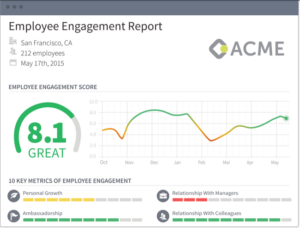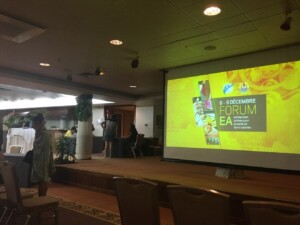Tahiti or The Pacific’s Limbo
Posted on July 10, 2017

Part One: The Club of Ex
The ora na, the gang,
The Directorate of Health of French Polynesia invited me to Tahiti to talk about well-being at work. Why do you ask me in particular, in the hope of knowing how to invite you there too? Because we have an office that decided to have a different structure from the traditional accounting model and mostly because texts like this travel, even at 26 hours of plane flight.

I accepted the invitation almost instantly, thinking myself of my own well-being to leave the first snows for the Pacific Islands. My speech focused on three points:
1) The impact of well-being at work
2) The Importance of Creating a Healthy Work Culture
3) Leadership
French Polynesia must cope with a major problem of being overweight. It is said that 70% of the workforce is overweight and nearly 40% suffer from obesity (compared with 32% in the United States). The Polynesian, in addition to naturally having a robust framework, at The Rock, likes to feel what it cooks, and it is rather fat and sweet.

The Public Health Branch has been working for a year to encourage businesses and the public service to take initiatives to counter this scourge. They must cope with the shock of a very gregarious local culture and the legacy of French working structures: a pronounced hierarchy, a control-oriented chain of command, with a Gaulish touch of honor on how to do things.
The presentation lasted two and a half hours, in my usual style of conversation: a long soliloquist sparse apartas, footnotes and anecdotes. I shocked at what seemed to me crucial in the management of well-being at work, hoping to touch the few managers who made up the hall. For the latter reason, I will not rewrite the verbatim of the conference here, but I will nevertheless take advantage of it to draw up some important points which I think it right to repeat.
Part One: Impact of well-being
The exes club
This is not the first time in the history of management that emphasizes well-being at work. A decentralized working structure should absolutely maximize the commitment of its employees to the company. In addition, employee empowerment requires going through an alignment of interests with those of the business, and special attention to the needs of individuals (other than compensation) seems to come off as the cheapest and most sustainable way ‘to access.
This is the principle of the galley against the Va’a, the Polynesian canoe. Coercion and control is the best way to advance a boat when employees are not motivated or well fed, and they are suffering from dysentery. A team of Va’a, however, only needs management; it can demonstrate impressive performance only through the intrinsic motivation of rowers.

In order to have a motivated rowing team, we focus on a number of major axes that will allow us to analyze whether the workforce is likely to contribute to the company in a positive and dynamic way, knowing that companies that demonstrate a higher commitment Peers have a higher productivity of 21%. These are statistics that I borrow from the excellent tool for measuring employee engagement, Officevibe, which we use internally. Here are the metrics that are analyzed:
- Personal Growth
- Recognition
- Relationship with colleagues and managers
- Happiness
- Compensation and Career
- Sense of belonging
- Feedback
- Health
- Aligning with the company

Working on these axes will enable the company to reduce its absenteeism rate, increase productivity, reduce the turnover rate of its staff and in a more informal way, increase the responsiveness and creativity of the organization.
Although this aspect of the company was important yesterday, it is becoming increasingly important for a few factors related to the acceleration of new technologies: the value-added task is replaced by the computer and the environments are even more shifting. The new jobs that robotization brings will require more education of the employees, but above all an adaptability to the increasingly increasing change. At Le Chiffre, it is one of the most important recruitment criteria: are you able to adapt quickly, since you will not do the same job for 30 years?
Therefore, companies will have access to a more educated and self-directed workforce. They will also have a need for reactivity to which control-based structures do not respond.
The relationship used evolves as customer relations, successful companies can not manage their workforce as if it were a pure commercial transaction (labor for pay). Like Apple or Tesla with their products, the organization striving for excellence wants to create an adherence of its workforce to the raison d’être of the company, but also treat it as competent adults And responsible.

The three exes (and I’m not talking about Liza Frulla, J-P Charbonneau and Marie Grégoire)
Experience
We talk about training, but also about work experience. If it is said that it takes about 90 days for an employee before adding value to a company, an employee continuing education in organizations brings invaluable added value to companies.
It is often said that Generation Y is fickle, but our experience through Le Chiffre, and on a larger scale with our client GSOFT (a model of inspiration), is that the turnover rate of employees is very low when this one Is engaged. The generation entering the labor market is much more aligned with flexibility and well-being at work than outright earnings. The time of family sacrifice, ideological and personal well-being for a greater salary is over.
Experiential
Dynamic economies move away from convenience. The interaction (or experience) between the consumer and the product is where companies can retain and retain their customers. In organizations, it is the person closest to the interaction who is best placed to provide exceptional service or to reflect on how the consumer will experience his / her use of the product. A happy employee puts his own in the final product, creating the kind of experience we want for the customer.
Experimentation
Creating decentralized environments allows the abundance of initiatives and creativity. By giving more latitude to individuals and by increasing the informal relationships between employees, the chances of arriving with innovative approaches to the complex problems that a company encounters are multiplied.
The second part
In sum, the dynamic environment of a robotized economy will require more decentralization, and the best way to ensure decentralized unit performance is its alignment with the company, which relies on the welfare of employees. Obviously, I am only the apostle of a philosophy focused on happiness at work. I invite you to follow the blog of Simon De Baene, President of GSOFT on Business, a great guru on the subject.
I will tell you more in the second part of this text. You will also know how I got apostropher by Tahitian nationalists, proud counterparts of my uncle Vital.


